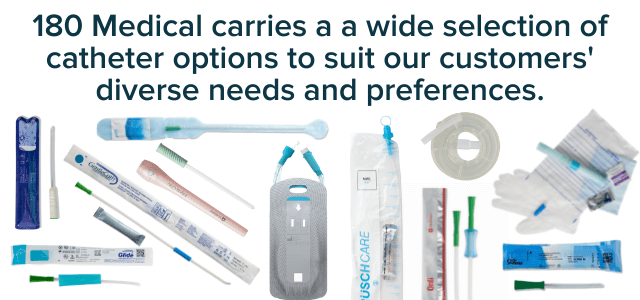
Are you new to using catheters? If so, you probably have some questions. You might even wonder what issues you could encounter or if there are any common mistakes that people new to catheter usage sometimes make.
Let’s go over some of the top issues that impact people new to self-catheterization, and how we can troubleshoot these common catheterization concerns and issues.
Top 5 Common Mistakes When New to Catheter Usage
There’s no denying it’s not always an easy transition to go from being able to urinate on your own to using a tube to drain your bladder. However, before long, it can become second nature. All you need is a little information on how to use catheters hygienically along with some practice.
So what are some common mistakes people new to using catheters make sometimes? And how can you avoid these self-catheterization problems? Here are a few answers to those questions.
Mistake 1. Not Using Enough Lubricant
First and foremost, when using an uncoated straight catheter, it’s important to ensure enough lubricating jelly is applied to the tube.
Many people find that using a pre-lubricated catheter, hydrophilic catheter, or closed system catheter is often much more comfortable than standard uncoated catheters with separate lubricating jelly.
Why is using catheter lubricant important for insertion?
Because it reduces friction inside the urethra or stoma passage when you’re inserting the catheter. Friction can cause micro-tears in the urethral lining, which is also known as urethral trauma.
According to the Urology Care Foundation™, the foundation of the American Urological Association, urethral trauma may sometimes create scarring, which might later block the flow of urine. It may also lead to a higher susceptibility to getting UTIs (urinary tract infections).
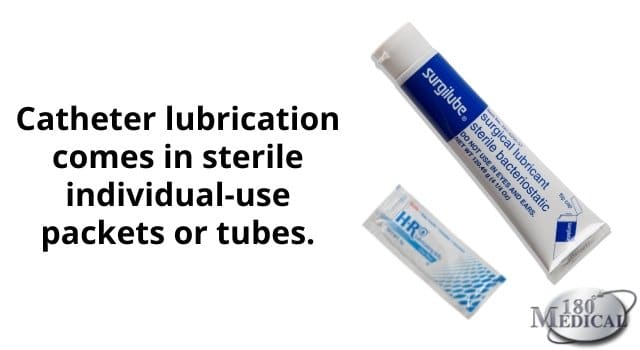
How do you apply lubricant to a catheter?
There are a few different ways to apply lubrication to your catheter. First, it’s always a good idea to make sure your hands are clean prior to handling your catheter supplies. Wash your hands well with warm, soapy water or use a disinfecting wipe.
Next, get ready to apply your lubricating jelly, whether that’s a sterile lubricant packet or a tube.
Method 1: Tear or trim off the ends of your lubricating jelly packet. Then slide your uncoated catheter inside the packet and move it back and forth to adequately coat the tube.
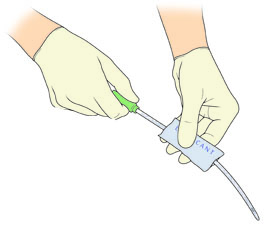
Method 2: Trim or tear one corner of your catheter lubricant packet, or open your lubricant tube. Then squeeze the lubrication along the length of the catheter tube. If you want to spread it manually, consider wearing gloves rather than using your bare hands to reduce the risk of bacterial contamination.
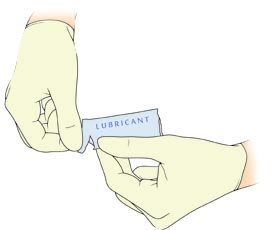
Helpful Catheter Lubrication Tip
Sterile lubricant packets may make the catheterization process more hygienic than using the same tube of lubricant each time. A handy bonus: lubricating jelly packets can be more conveniently sized for discreet carrying — even in a pocket.
Mistake 2. Not following your prescribed catheterization schedule.
One of the most important parts of starting to use catheters is following your prescription. Intermittent catheters are medical devices that require a prescription for use.
If your doctor or prescribing healthcare professional has instructed you to start using catheters, then based on their diagnosis of your condition, catheters are medically necessary to drain your bladder. This can be for all kinds of reasons, such as an enlarged prostate or BPH, incomplete bladder emptying or urine dribbling, bladder retention, or a recent spinal cord injury to name a few.
No matter the reason, maintaining your bladder’s health is important. So be sure to catheterize the number of times per day your doctor recommends and always prepare in advance before leaving your house with enough catheters, whether you’re heading back to school or traveling with your catheter supplies.
Mistake 3. Not drinking enough water.
If you’re new to catheter usage and you just don’t want to have to use catheters, you’re not alone. Lots of people face some fears at first or even an aversion to the self-catheterization procedure. This can lead to not drinking enough water in order to avoid having to self-cath as often.
However, referring back to Mistake 2, it’s incredibly important to follow your doctor’s prescription. Plus, staying well-hydrated is important for your overall body health.
It’s easy to forget that around 55 to 60% of our bodies are made up of water. So it’s important to drink enough water daily to flush waste from the body, regular your body temperature, and so much more.

Mistake 4. Forcing a catheter in.
One complication that can occur with using intermittent catheters to empty the bladder is sustaining trauma or an injury. Not everyone has an easy time inserting a catheter, especially at first. But you should never force a catheter or you might cause an injury.
A common reason behind initial resistance may be tight muscles due to nervousness about the cathing procedure. If you’re trying to insert a catheter and it just feels like it doesn’t want to go in, take a break. Take some deep breaths in through your nose, hold it for a moment, and then release. Do this a couple of times to start relaxing your body. Then make sure your catheter is adequately lubricated and try again. Sometimes, coughing may help.
However, if you’re still feeling resistance inside your body or even some pain, stop and call your doctor. There may be a urethral obstruction or something else hindering the insertion process. It’s best to speak with a qualified medical professional to determine the cause.
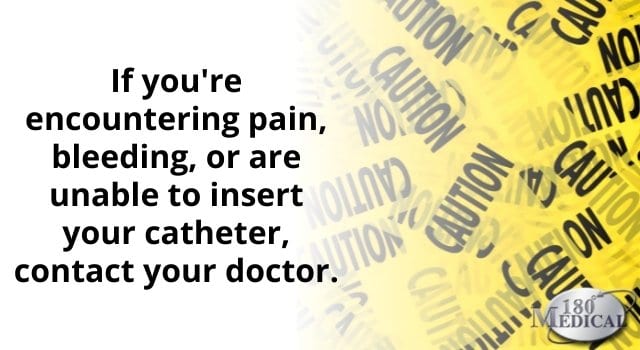
Are you using the right catheter for YOU?
Sometimes, when you’re encountering difficulty with using a specific type of catheter, it’s possible it may just not be the right catheter for your unique body and needs. When it comes to catheters, there’s just no one-size-or-type-fits-all situation.
The good news is at 180 Medical, you’re not stuck with just one brand. We offer a wide variety of catheter options of all types from all major brands so you can try and choose what feels and works best for your needs.
Our compassionate Product Specialists are here for all your catheter questions, so contact us if you’re ready to try another option.
Mistake 5. Reusing your catheters.
Lastly, washing and reusing catheters is a common mistake when new to catheter usage. Some people may feel it cuts back on waste or reduces costs. However, reusing catheters may be associated with a higher risk of CAUTIs (catheter-associated urinary tract infections).
If you’ve ever had a UTI before, you already know they’re no fun at all. Plus, it means additional doctor’s visits or even trips to the emergency room if it gets bad enough, which often means spending more money on medical bills.
Ultimately, your doctor or other prescribing healthcare professional is the best person to talk to about whether sterile use catheterization (using a catheter once and then disposing of it) is right for you and your needs.
180 Medical Is Here For All Your Catheter Needs
Ready to find a reliable catheter company? 180 Medical isn’t just a leading accredited catheter supplier that’s trusted by healthcare professionals across the country. We devote ourselves to providing the best possible customer service experience for you.
We know the transition to learning to use catheters isn’t always easy. Some of our employees know that firsthand. Our goal is to make this journey as stress-free as possible so you can get back to living your life.
Experience the 180 Medical difference by contacting us for a free personalized consultation about your product needs.
Disclaimer: Please note that this is intended to provide a general understanding of self-catheterization. It should not be used in place of a visit, call, or consultation with a physician or other healthcare provider.

